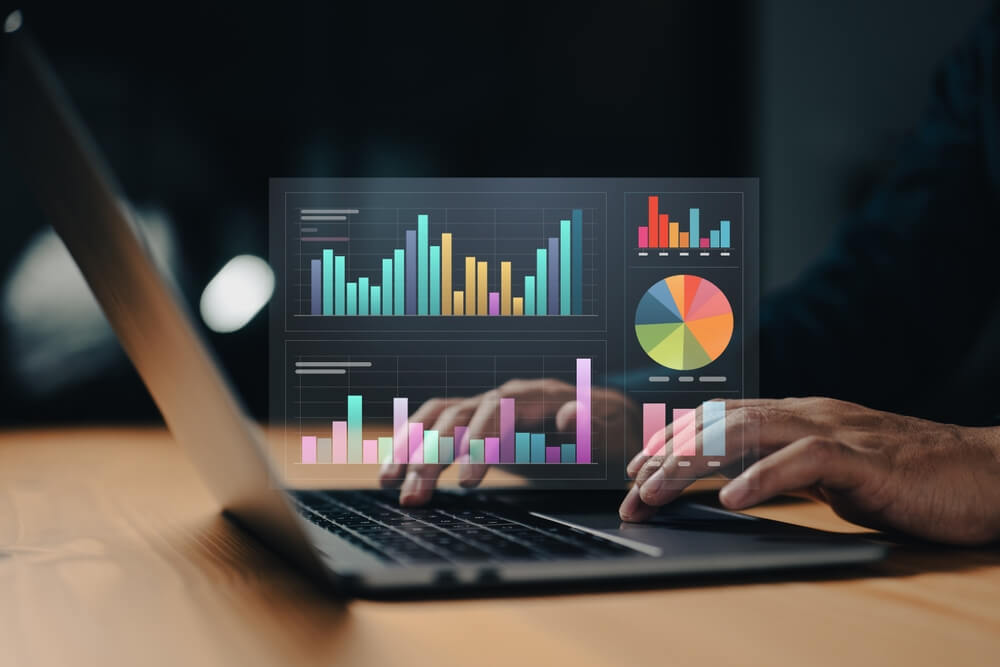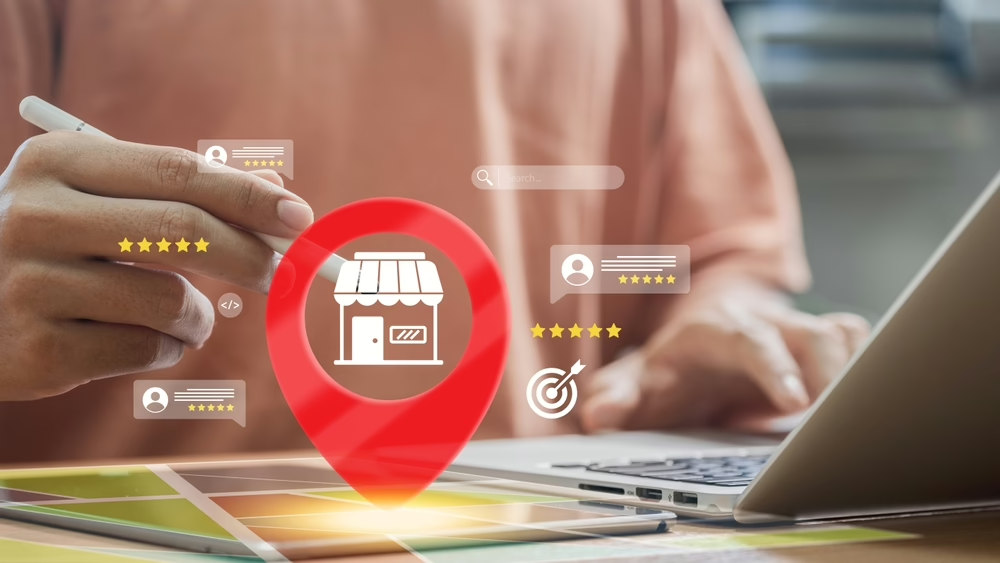
How Demand vs Lead Generation Differ and Why It Matters Now
Although they sound alike, San Diego demand generation differs from lead generation. This article explains these two interrelated marketing concepts. You will learn about the following: To better explain the difference between demand and lead generation, picture a sales funnel. This visual represents every customer’s journey, from the first brand interaction to purchase and sometimes retention. It implies that all leads begin at the top, but only a fraction make it to the bottom, where purchases occur. For instance, you are the Pacific Seafood Restaurant. Your sales funnel might look like this:
To better explain the difference between demand and lead generation, picture a sales funnel. This visual represents every customer’s journey, from the first brand interaction to purchase and sometimes retention. It implies that all leads begin at the top, but only a fraction make it to the bottom, where purchases occur. For instance, you are the Pacific Seafood Restaurant. Your sales funnel might look like this: Learning the difference between San Diego lead and demand generation matters for these reasons:
Learning the difference between San Diego lead and demand generation matters for these reasons:
- What are the primary differences between demand and lead generation?
- Why does it matter to know their differences today?
Demand and Lead Generation: How Do They Differ?
 To better explain the difference between demand and lead generation, picture a sales funnel. This visual represents every customer’s journey, from the first brand interaction to purchase and sometimes retention. It implies that all leads begin at the top, but only a fraction make it to the bottom, where purchases occur. For instance, you are the Pacific Seafood Restaurant. Your sales funnel might look like this:
To better explain the difference between demand and lead generation, picture a sales funnel. This visual represents every customer’s journey, from the first brand interaction to purchase and sometimes retention. It implies that all leads begin at the top, but only a fraction make it to the bottom, where purchases occur. For instance, you are the Pacific Seafood Restaurant. Your sales funnel might look like this:- Awareness Stage: Thousands of tourists and residents saw billboards and promotions about San Diego’s local restaurants while strolling through Gaslamp Quarter or La Jolla.
- Interest: Of those who saw seafood restaurant promotions, only a few hundred decided to look up online reviews or check out menus.
- Consideration: Of the hundreds who showed interest, only 150 included you in their short list for their dinner plans.
- Intent: Of the 150 who considered your business, only 80 picked you and made a dinner reservation.
- Decision: Of those who booked, only 50 tourists eventually dined.
- Retention: Of the 50 diners, 30 found the dining experience wonderful. They decided to return in the same week or recommended you to friends.
- Avoid losing potential customers unnecessarily.
- Maximize the conversion at each level.
- Improve online marketing strategies to make them more cost-effective.
What Are Demand and Lead Generation?
As its name suggests, demand generation is a digital marketing method whose primary goal is to raise awareness and interest in a brand. It is not concerned with making a sale but instead with consistently engaging prospects. This way, you remain memorable and relevant to your audience until they are ready for conversions. On the other hand, lead generation involves identifying, capturing, and nurturing sales-ready leads. These are people or businesses with a high level of interest, a growing commitment to buying, and the money to pay for the products and services. If they become customers, the lead generation’s focus then shifts to increasing retention or loyalty until they become brand advocates. By this time, they amplify your marketing tactics with word-of-mouth referrals or glowing reviews that attract more prospects to your business. Overall:- Demand generation is a long-term strategy. Lead generation is short because it zeroes in on capturing immediate interest and turning it into sales.
- Lead generation usually happens at the bottom of the funnel, while demand generation is at the top, especially in the awareness and interest stages.
- Demand generation involves building brand awareness and keeping your company top-of-mind until a prospect is ready to engage. Lead generation is concerned with capitalizing on that readiness and ensuring a smooth path toward a sale.
- Marketing departments often perform demand generation. The sales team handles lead generation.
- Both are data-driven but use the information differently. Demand generation gathers data to understand market trends and refine branding. Lead generation uses it to qualify and score potential customers and personalize sales tactics.
Why Should You Know the Difference?
 Learning the difference between San Diego lead and demand generation matters for these reasons:
Learning the difference between San Diego lead and demand generation matters for these reasons:1. Competition Is Intense
According to Axios, San Diego manufacturing jobs grew by over 6% between 2017 and 2022. It suggests that the business market in the county is booming, and you are up against more competition. You need a strong brand identity that spells out your unique value proposition and a more targeted marketing approach to thrive. For example, a San Diego craft brewery uses storytelling to generate demand. They might produce a series of high-quality videos detailing the brewing process or their origin story. They then share clips on social media and their website. Along the way, their data might suggest most of their visitors were from Facebook and Instagram. To leverage their interest, the brewery can run targeted social media ads offering a limited-time promotion code for a discount on their online beer shop.2. Consumers Are More Empowered
Consumers today have access to more information about products and services than ever before. They research products online, read reviews from other customers, and compare prices across multiple retailers. They also use social media to share their experiences with others, ultimately influencing others’ buying decisions. Further, they can choose to support, disengage from, or cancel brands based on their values and beliefs. Because they are more socially aware, buyers expect personalized experiences and demand transparency. For example, what is your business’s environmental impact? This significant marketing shift affects demand and lead generation in the following ways:- San Diego demand generation should be less about the brand and more about the audience. How can you solve their problems? Using authentic communication and connection, your strategies must also enhance your credibility and trustworthiness.
- Lead generation has to prioritize personalization and user experience. Because they know they have more choices, prospects can quickly leave a long checkout page.
- Both techniques should emphasize consumers’ contribution to business growth.
3. AI Is Here
Artificial intelligence (AI) is transforming modern marketing. In particular, machine learning enables you to create a hyper-personalized experience for visitors based on real-time data during demand generation. It also:- Allows businesses to prioritize their efforts toward high-value prospects based on predictive analytics.
- Engages website visitors, answers questions, and guides them through the buyer’s journey 24/7 through chatbots.
- Automates the buying, placement, and optimization of PPC ads, targeting users more effectively based on their online behaviors, demographics, and preferences.
- Sifts through massive social media data to glean insights about market sentiments, emerging trends, or audience preferences.
- Scoring leads using different models.
- Predicting future trends and refining the scoring and qualifying techniques as appropriate.
- Customizing email content based on a recipient’s past behaviors, interactions, and preferences.
- Enriching captured data with more information such as a lead’s role in a company, their interests, or their activity on social media platforms.
- Analyzing communication with leads (e.g., emails or chatbot interactions) to identify sentiments, questions, or concerns.
- Triggering automatic follow-up messages, ensuring that leads are engaged at the right time with relevant content.
Summing Up
Despite these differences, these two primary sales-funnel marketing techniques work hand-in-hand. Demand generation sets the stage and lead generation performs the act. With sustained brand building, lead generation can convert more persuadable leads. Effective lead generation translates demand-generation-driven awareness into actual sales. Do you need help empowering your digital marketing plan with effective demand- and lead-generation strategies? Contact Digital Authority Partners (DAP) and schedule a free consultation.Want To Meet Our Expert Team?
Book a meeting directly here



